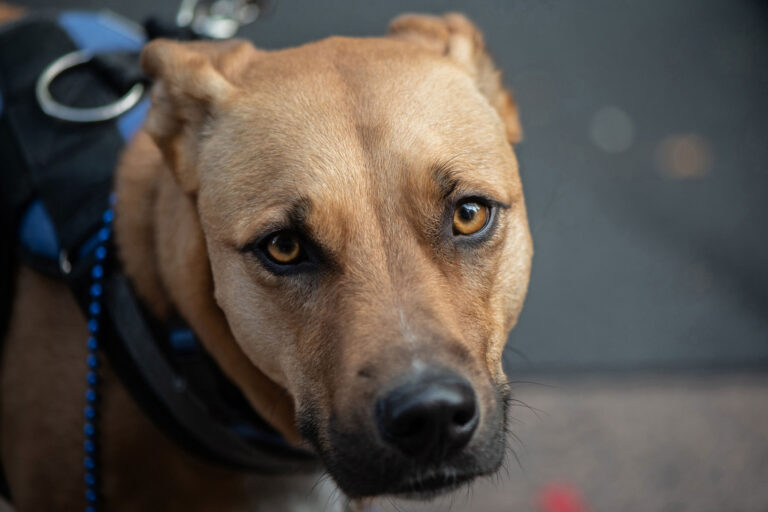Visiting the veterinarian can be a source of stress for both dogs and their owners due to unfamiliar scents and overwhelming sights and sounds, often resulting in canine anxiety. However, there are numerous strategies available to help your furry companion remain calm during these visits. In this comprehensive guide, we’ll explore 12 effective methods to alleviate your dog’s anxiety and enhance the overall experience of vet trips for all involved parties.
1. Familiarize Your Dog with the Vet's Office
An effective strategy to ensure your dog remains calm during vet visits is to acclimate them to the veterinary clinic environment. Introduce your dog to the clinic during non-urgent times, allowing them to familiarize themselves with the surroundings, including sights, sounds, and smells. This gradual exposure helps mitigate their anxiety and promotes a more relaxed experience during future appointments.
2. Practice Relaxation Techniques at Home
Teaching your dog relaxation techniques, like deep breathing exercises or gentle massage, aids in maintaining calmness during vet visits. Implement these methods in a familiar home environment, gradually integrating them into vet visits to establish a sense of comfort and security.
3. Utilize Positive Reinforcement for Calmer Vet Visits
Positive reinforcement is an effective method to alleviate fear and anxiety in dogs. Bring your dog’s preferred treats or toys to the vet’s office and reward them for exhibiting calm behavior. This fosters positive associations with vet visits and promotes a relaxed demeanor during appointments.
4. Choose the Right Time for Visits
Select vet visit times during off-peak hours to minimize clinic activity. This diminishes environmental stressors, such as noise and commotion, facilitating a more tranquil experience for your dog.
5. Maintain a Calm Presence
As dogs are sensitive to their owners’ emotions, it’s crucial to exude calmness and composure during vet visits. Avoid conveying nervousness or stress, as it can heighten your dog’s anxiety. Instead, radiate a sense of tranquility and assurance to instill a feeling of comfort in your dog.
6. Implement Desensitization Methods
Desensitization entails gradually introducing your dog to anxiety-inducing stimuli in a controlled manner. Begin by driving past the vet’s office, and gradually progress to entering the building and waiting in the lobby. Through this gradual exposure, your dog will become less reactive to these triggers, thereby reducing stress during vet visits.
7. Use Pheromone Products
Pheromone products, such as sprays or diffusers, can help create a calming environment for your dog during vet visits. These products mimic the natural pheromones that dogs produce when they feel safe and secure, helping to reduce anxiety and promote relaxation.
8. Explore Medications or Supplements for Calming Your Dog During Vet Visits
In certain situations, medication or supplements may be essential to maintain your dog’s composure during vet visits. Discuss with your veterinarian to assess the suitability of anti-anxiety medications or natural supplements, such as CBD oil or calming chews, tailored to your dog’s requirements.
9. Train Your Dog with Handling Exercises for Stress-Free Vet Visits
dog overcome anxiety at vet visits by training them through handling exercises. Practice gentle touch routines like paw or ear handling at home to familiarize them with veterinary procedures.
10. Enhance Comfort with Familiar Items During Vet Visits
Boost your dog’s comfort during vet visits by bringing along familiar items like their beloved blanket or toy. These comforting belongings offer a sense of security, promoting calmness and relaxation amidst the unfamiliar surroundings.
11. Foster Communication with Your Veterinarian for Calmer Vet Visits
Establishing open communication with your veterinarian is essential for ensuring your dog’s calmness during vet visits. Share any specific fears or anxieties your dog may have, enabling your vet to implement suitable measures to alleviate stress during appointments.
12. Practice Patience and Understanding
Embrace patience and understanding as you assist your dog in staying calm during vet visits. Recognize the uniqueness of every dog, understanding that discovering effective strategies may require time. Show patience as they learn to manage their anxiety, and offer reassurance and support throughout the process.
Maintaining your dog’s calm demeanor during vet visits is crucial for their well-being and ensures they receive care without undue stress. Implementing the strategies outlined in this guide can create a positive vet experience for your furry friend. Stay patient, consistent, and supportive to help alleviate your dog’s anxiety. These efforts not only benefit their health but also strengthen your bond with your beloved pet.

Dr. Carolyn Stafford’s route to veterinary medicine demonstrates her steadfast commitment and enthusiasm for furthering the science of anatomic pathology.
Subscribe my Newsletter for new blog posts. Stay updated from your inbox!










